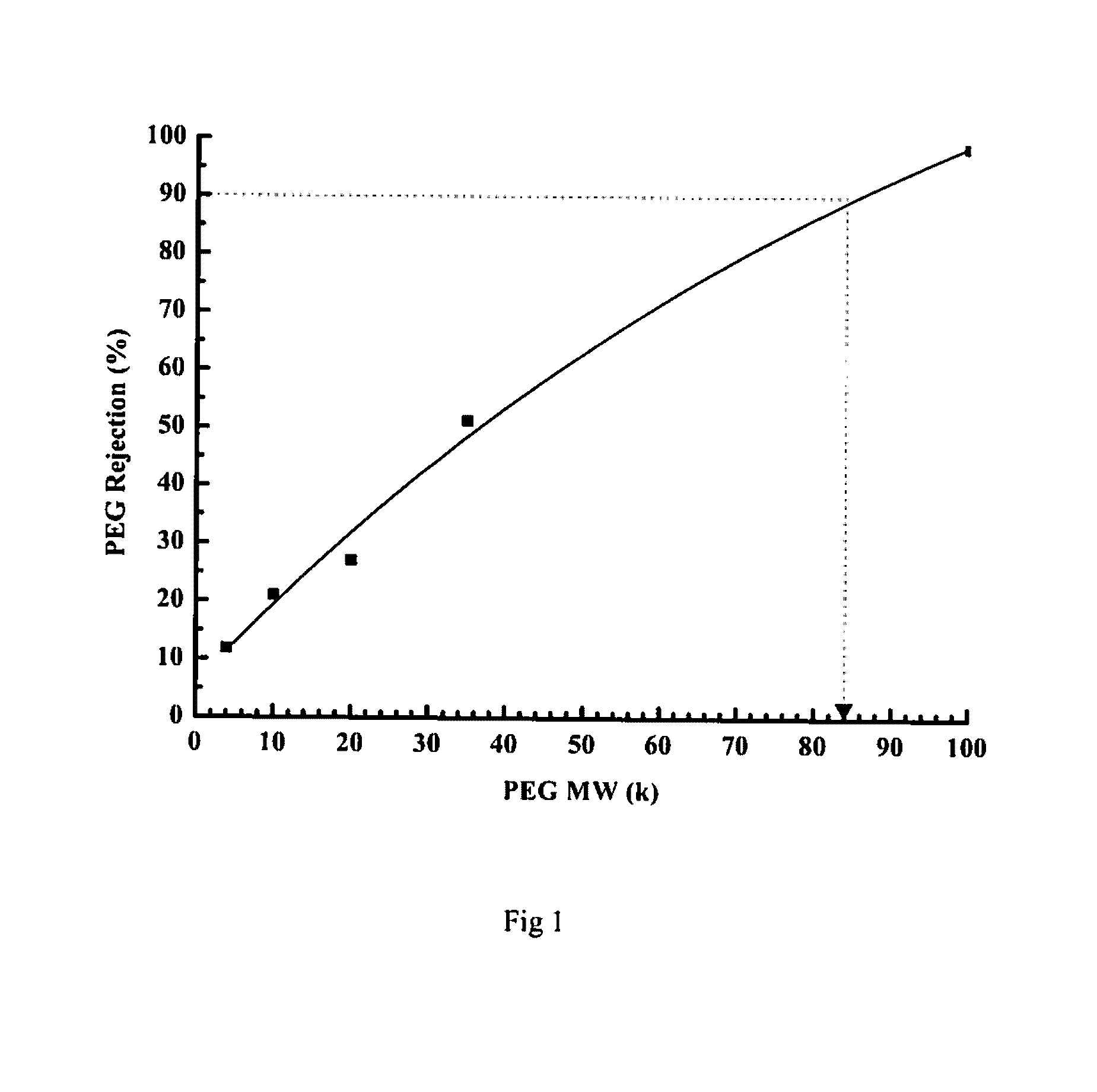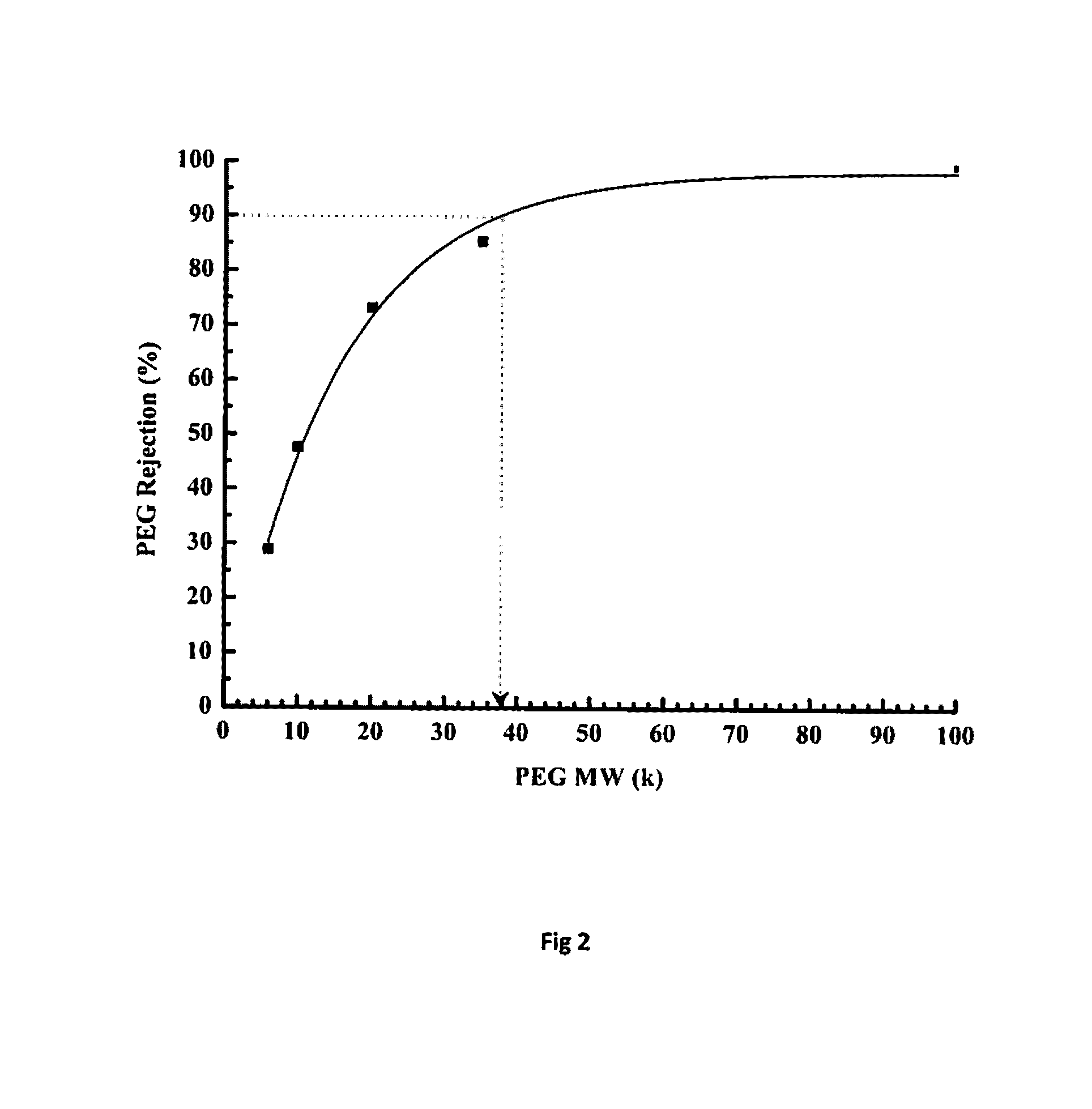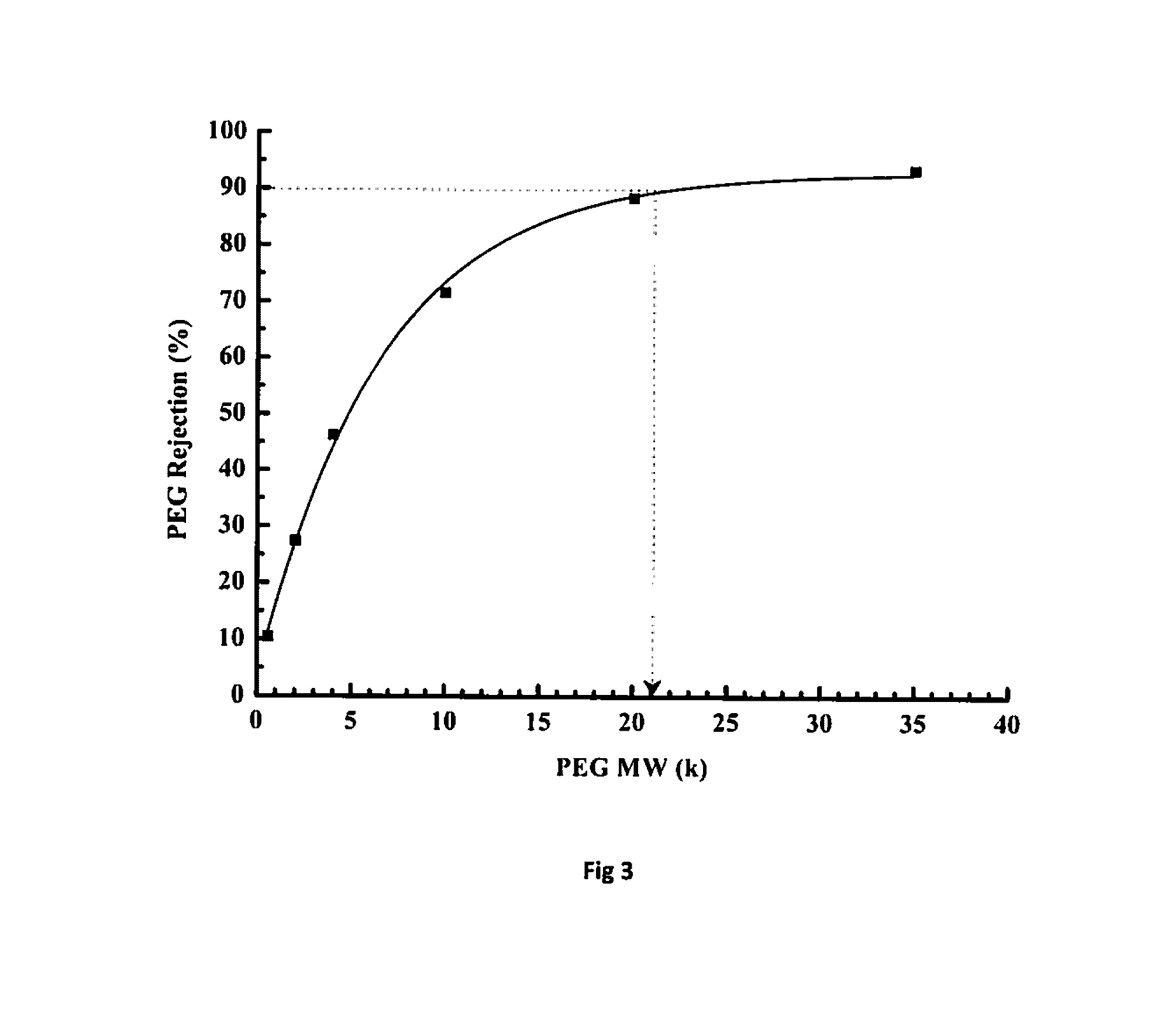Asymmetric membranes based on bupbi
a technology of asymmetric membranes and bupbi, applied in the field of asymmetric membranes, can solve the problems of low solubility, low cost, and inability to operate polyimides,
- Summary
- Abstract
- Description
- Claims
- Application Information
AI Technical Summary
Benefits of technology
Problems solved by technology
Method used
Image
Examples
example 1
Synthesis of Poly(Tert-Butylbenzimidazole) (BuPBI) with Varying Inherent Viscosity
[0071]A three-neck round bottom flask equipped with a mechanical stirrer, nitrogen inlet and CaCl drying tube was charged with PPA and raised the temperature upto 120° C. 80 g of DAB was added based on the amount of PPA and the reaction temperature was elevated to 140° C. After complete dissolution of DAB, required moles of 5-ter-butylisophthalic acid (BuI) as given in Table 1 was added; temperature was slowly raised to 170° C. and maintained for 5 hours after which, the temperature was further raised to 200° C. and maintained for specific duration as given in Table 1. The ratio of DAB:PPA was varied from 1:25-1:40; while ratio of and DAB:BuI was varied as 1:1-1:1.01 (Table 1). This disturbed stoichiometry was employed in order to get desired viscosity of the polymer; BuPBI. The polymer was obtained by precipitating reaction mixture into stirred water. It was crushed, washed with water, followed by aqu...
example 2
Preparation of the Dope Solution (NMP as a Solvent while Varying Polymer Concentration and its Viscosity), Membrane Preparation and Analysis
[0074]As given in Table 2, the dope solution containing BuPBI with inherent viscosity of 1.48 and 0.81 dL / g and concentration varying from 12 to 22% (w / v) were prepared using NMP (N-methyl pyrolidone) as the solvent. A 4% LiCl (of polymer quantity) was added and the solution was stirred for 48 hours while equipped with reflux condenser at temperature varying from RT to 160° C. The solution was then degassed and centrifuged. The membrane was casted on polypropylene (PP-2470) based non-woven support fabric. The knife gap was varied from 100-350 μm and casting speed was set to 0.1-5 m / min and then passed sequentially through gelation, rinsing and curing baths maintained at temperatures of 5-80° C. (Table 2). The membrane coupons were analyzed for water flux and rejection of polyethylene glycol (PEG). For analyzing PEG rejection, 0.1% solution of PE...
example 3
Membrane Preparation with BuPBI Possessing Inherent Viscosity of 1.2 dL / g
[0076]Dope solution of BuPBI with inherent viscosity of 1.2 dL / g (Table 1) was prepared in NMP as the solvent while keeping the concentration as 14% (w / v). The membranes were casted on PP or PE based non-woven support fabric (as given in Table 3) in order to obtain membranes M-8 to M-16. The knife gap was varied from 250-500 μm and casting speed was varied from 0.1-1.8 m / min, as given in Table 3. The membrane was then passed through gelation, rinsing and curing baths maintained at temperatures of 6-34° C. The membrane coupons were analyzed for water flux, which are summarized in Table 3.
TABLE 3Preparation parameters of membranes as given in Example 3 and theirpropertiesGel.RinseCuringAvg.MembraneKnifeSupportCastingtanktanktankwaterIdenti-gapfabricspeedtemp.temptemp.flux, Jwfication(μm)used(m / min)(° C.)(° C.)(° C.)(lmh)M-8250PE-33291.8282728250M-9250PE-33290.9282728254M-10500PE-33290.5283029.5129M-11500PE-33290....
PUM
| Property | Measurement | Unit |
|---|---|---|
| Temperature | aaaaa | aaaaa |
| Temperature | aaaaa | aaaaa |
| Time | aaaaa | aaaaa |
Abstract
Description
Claims
Application Information
 Login to View More
Login to View More - R&D
- Intellectual Property
- Life Sciences
- Materials
- Tech Scout
- Unparalleled Data Quality
- Higher Quality Content
- 60% Fewer Hallucinations
Browse by: Latest US Patents, China's latest patents, Technical Efficacy Thesaurus, Application Domain, Technology Topic, Popular Technical Reports.
© 2025 PatSnap. All rights reserved.Legal|Privacy policy|Modern Slavery Act Transparency Statement|Sitemap|About US| Contact US: help@patsnap.com



